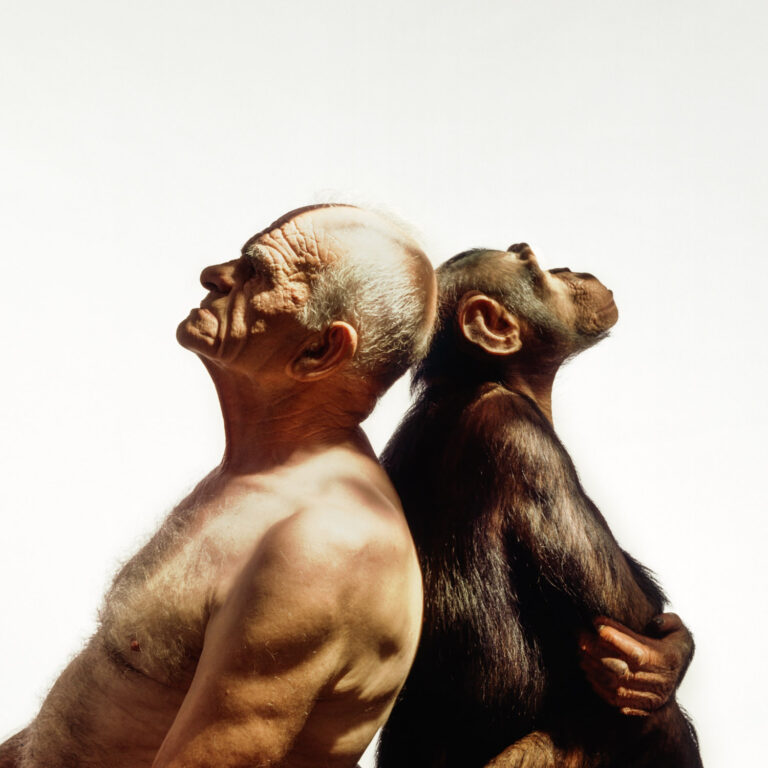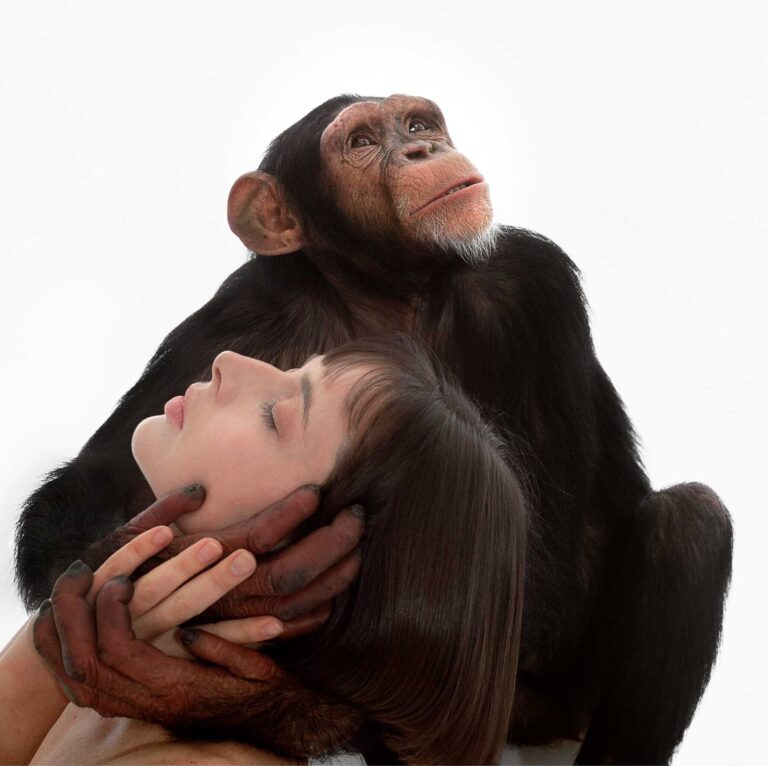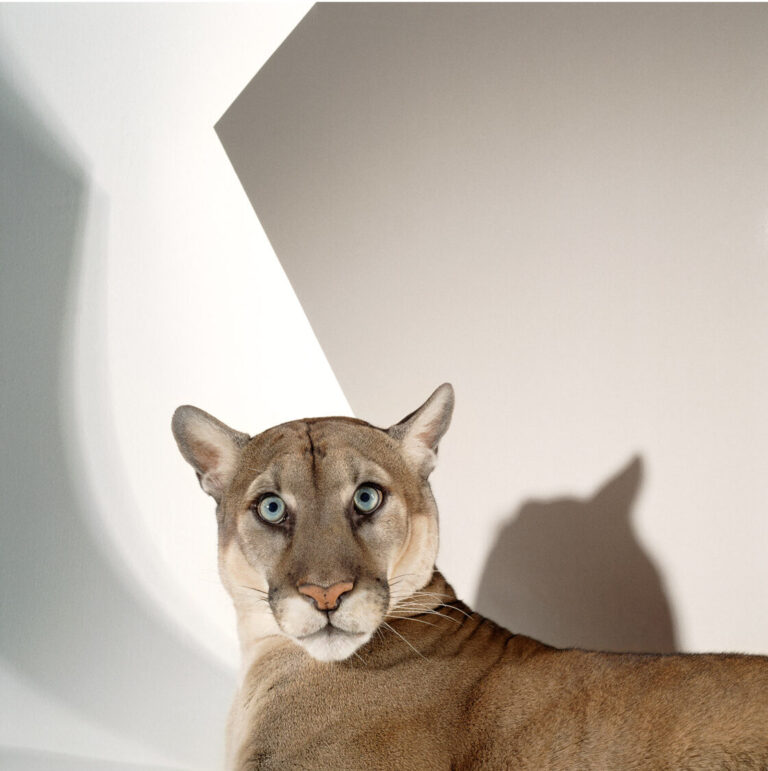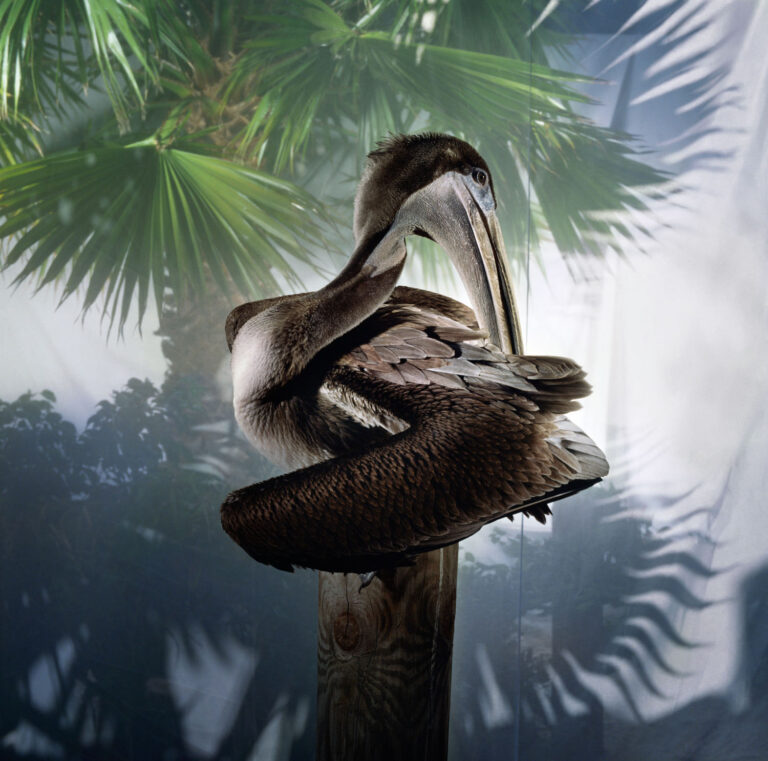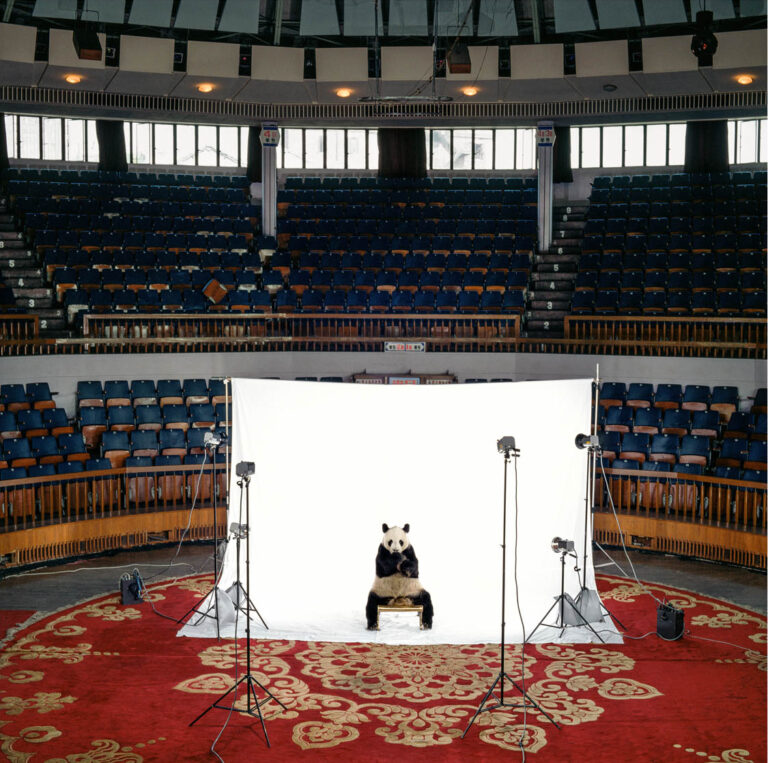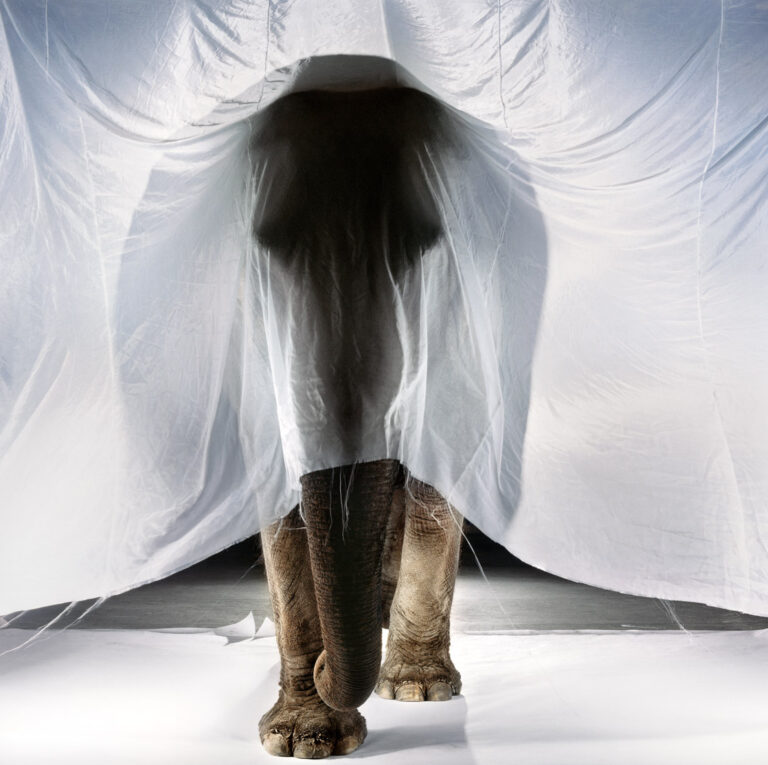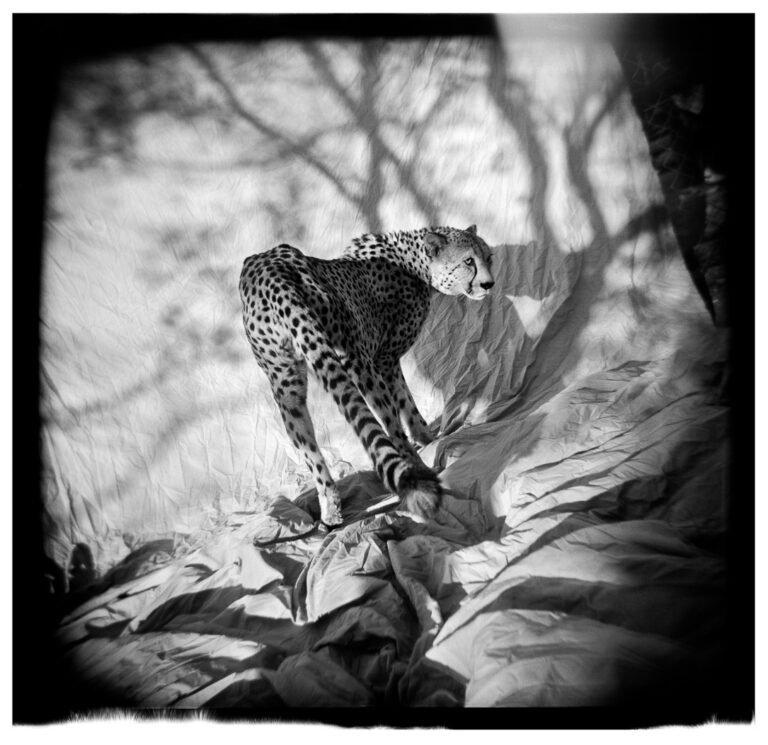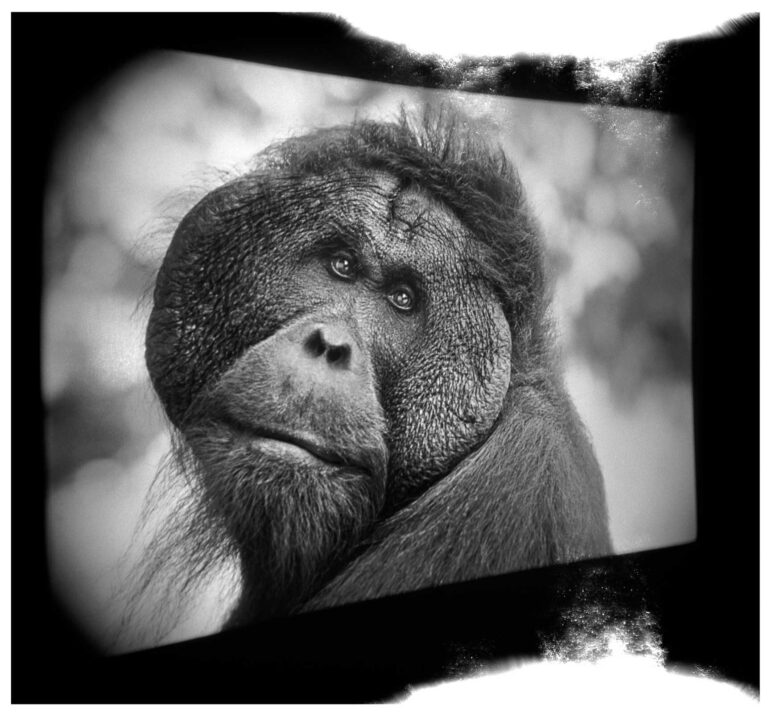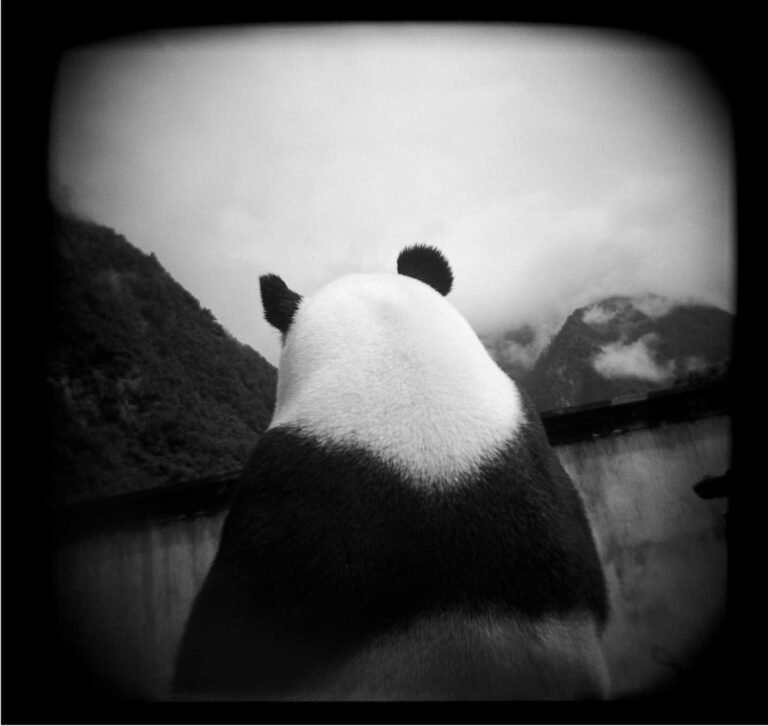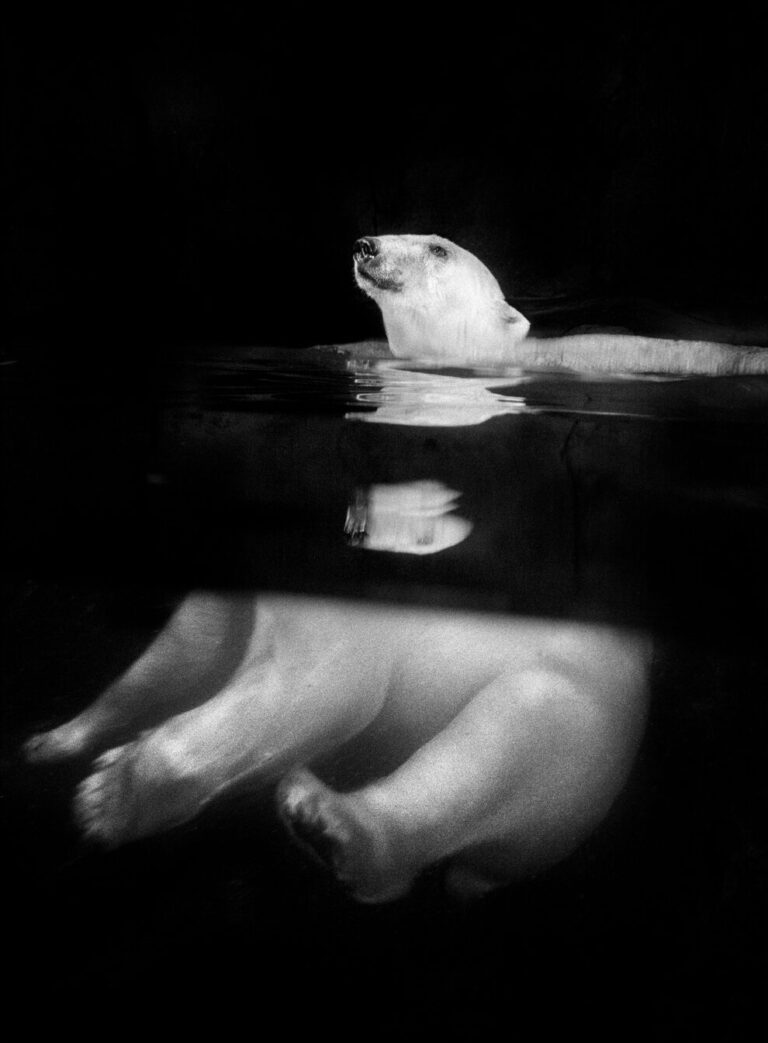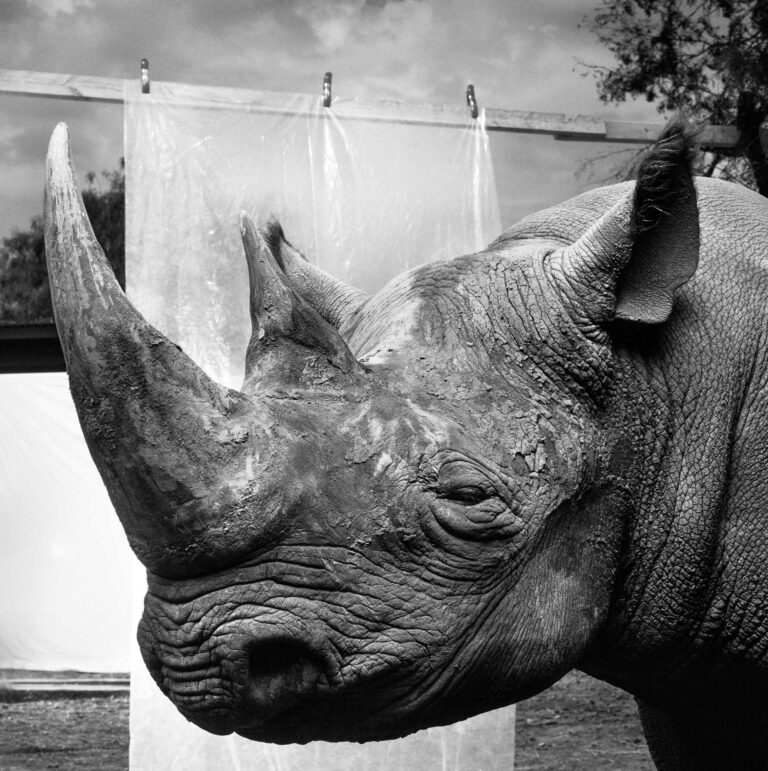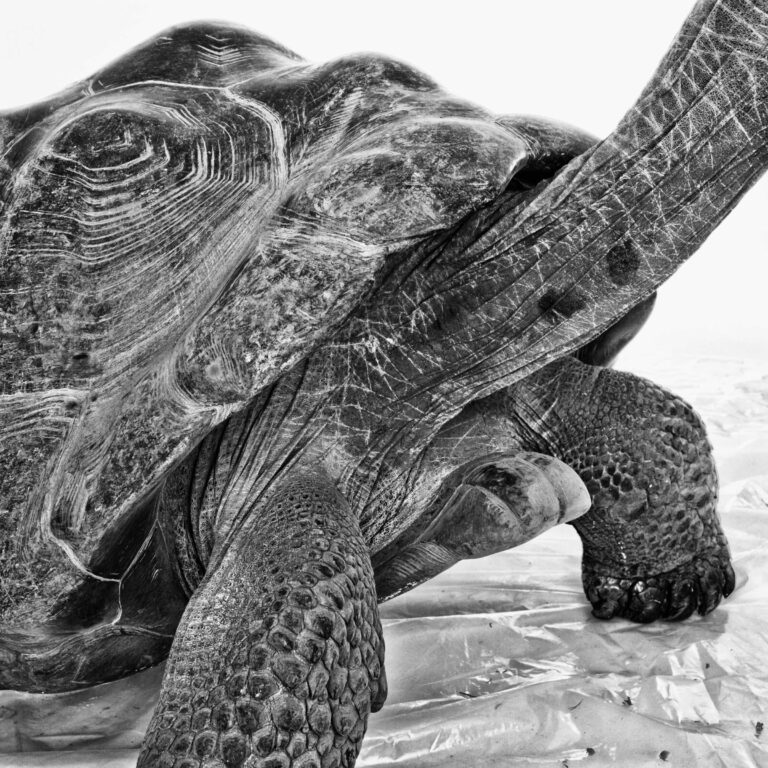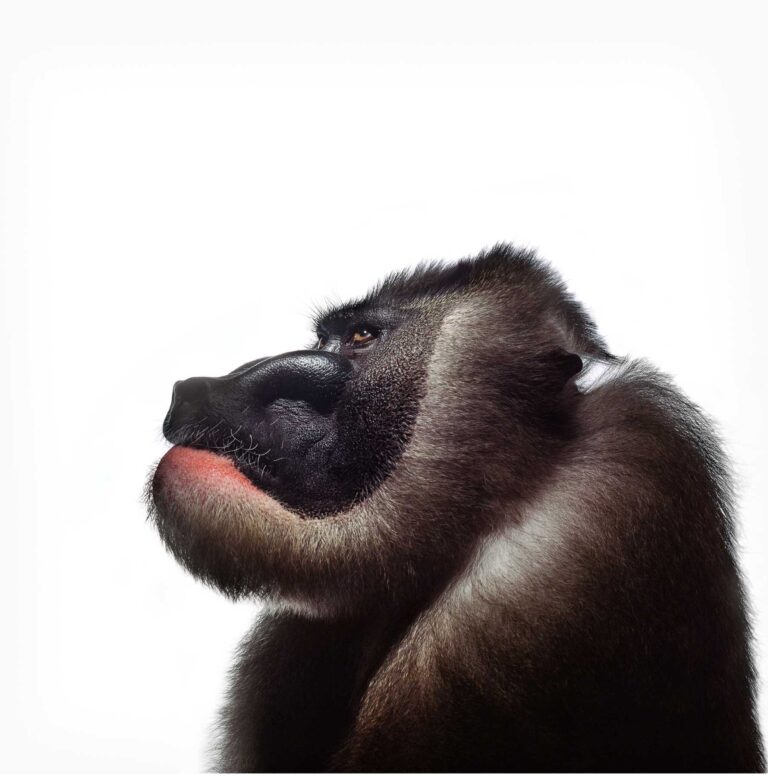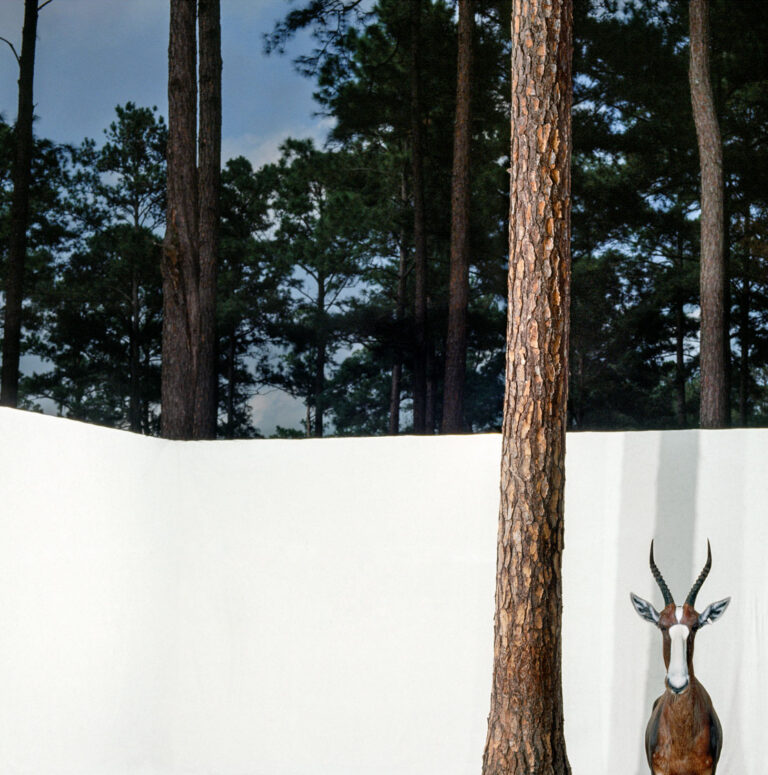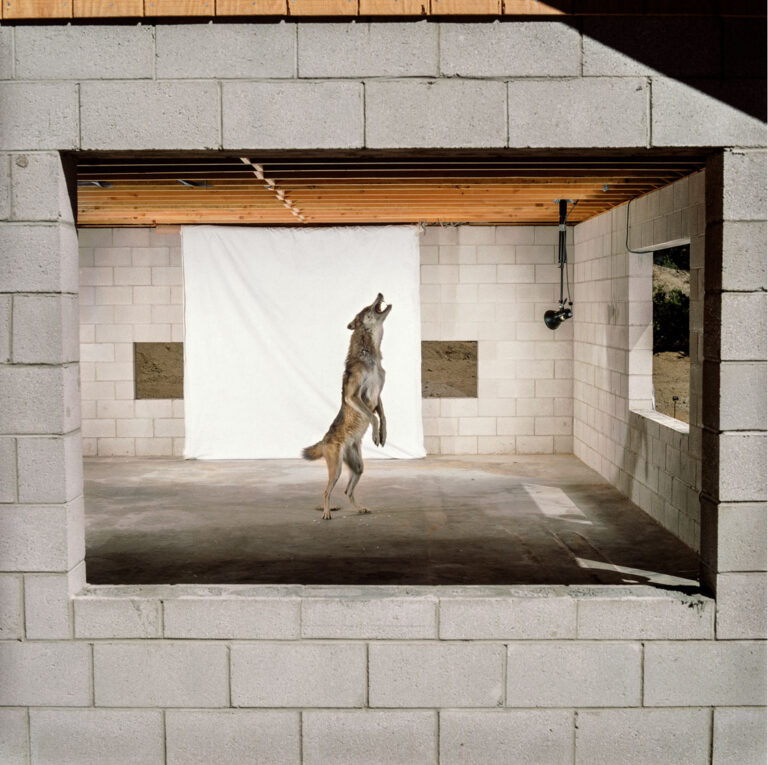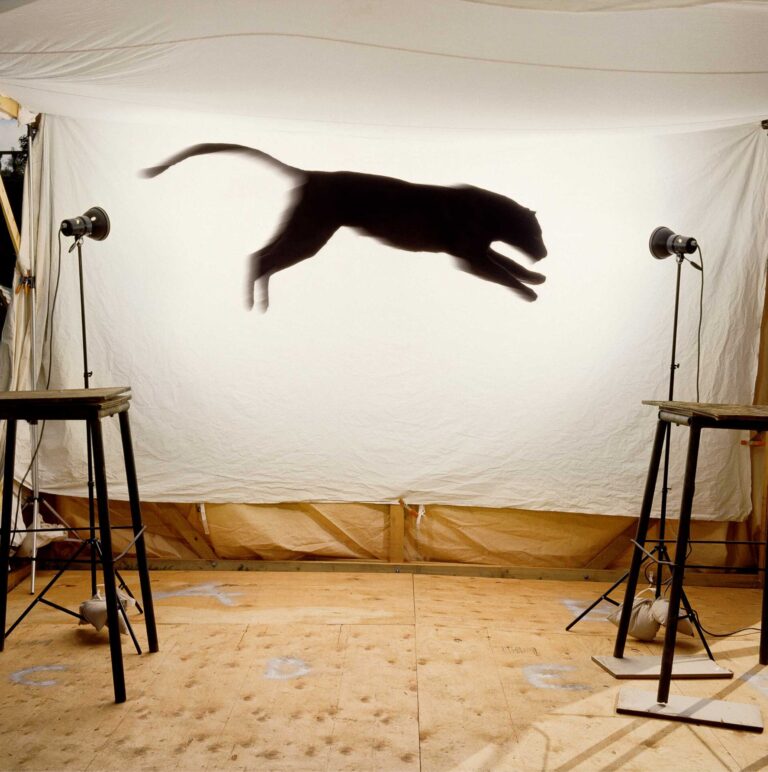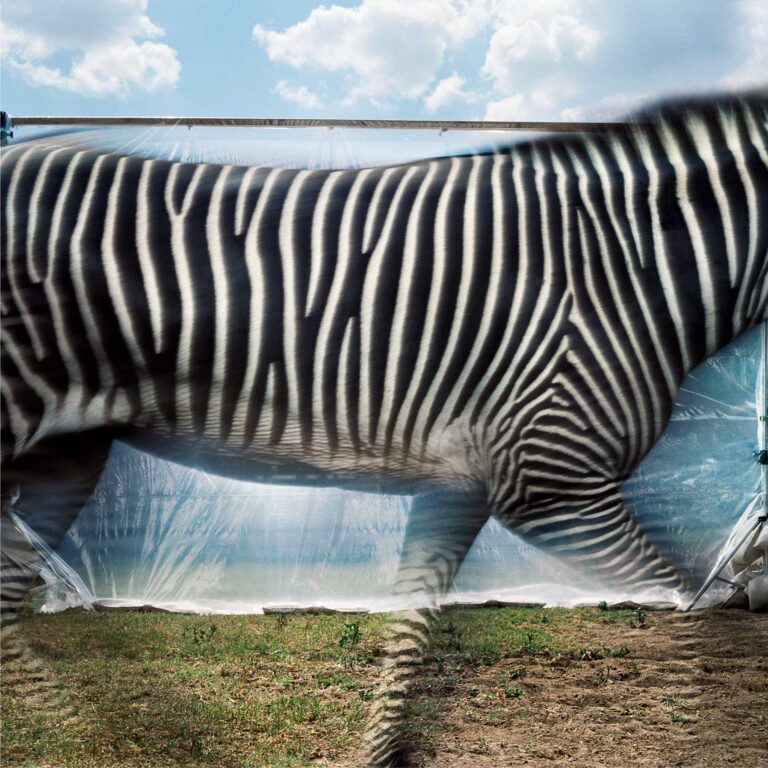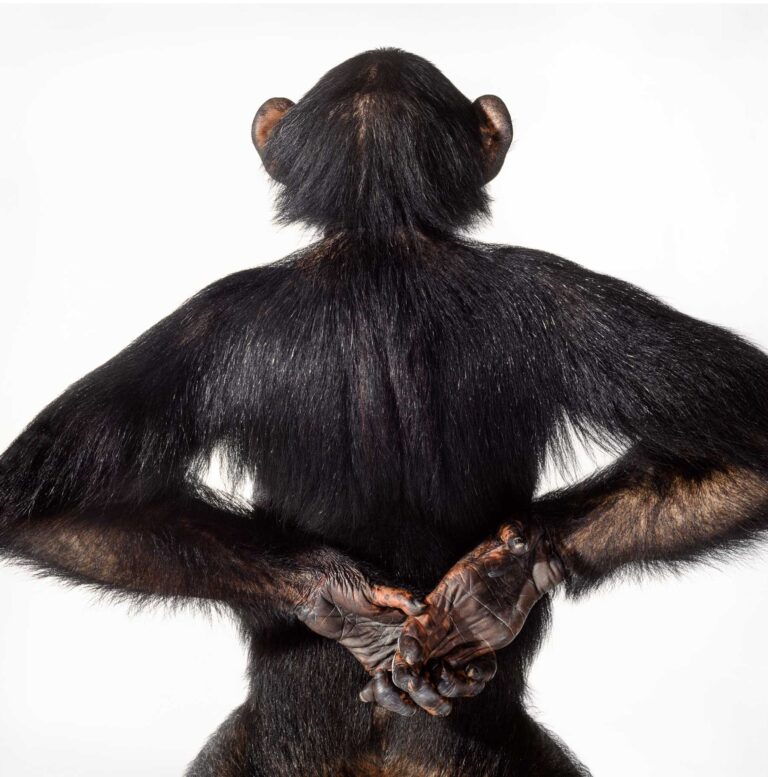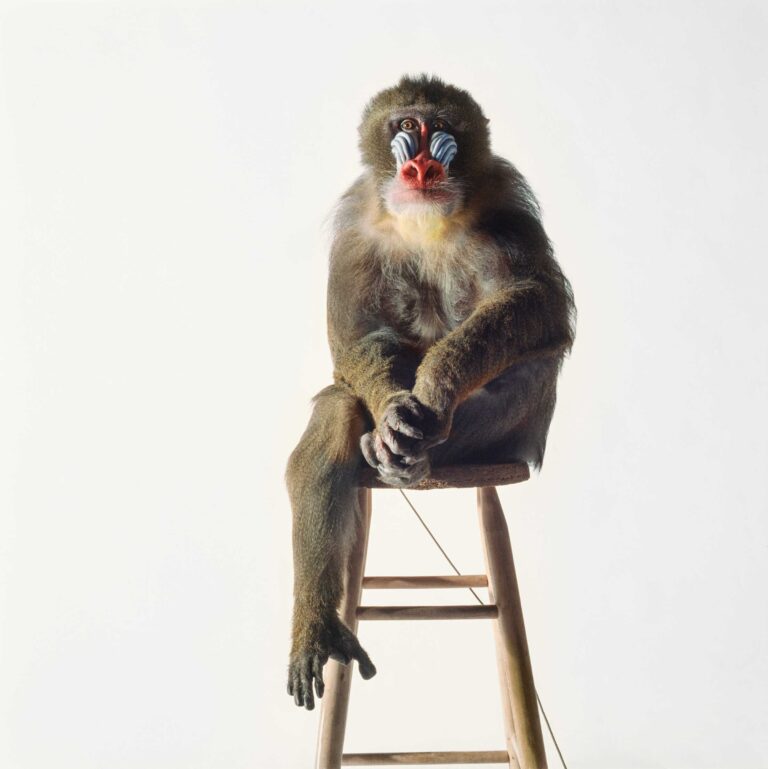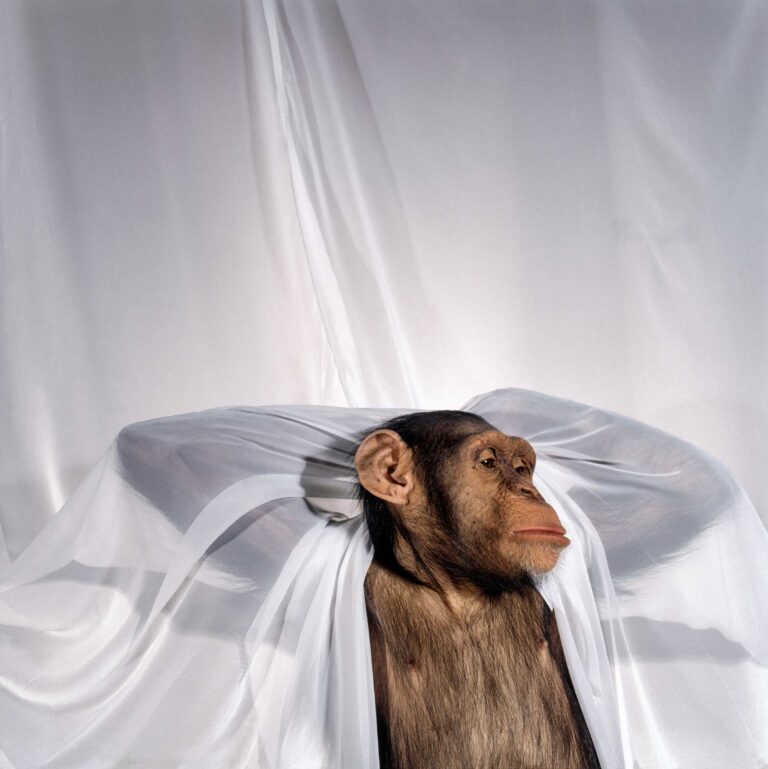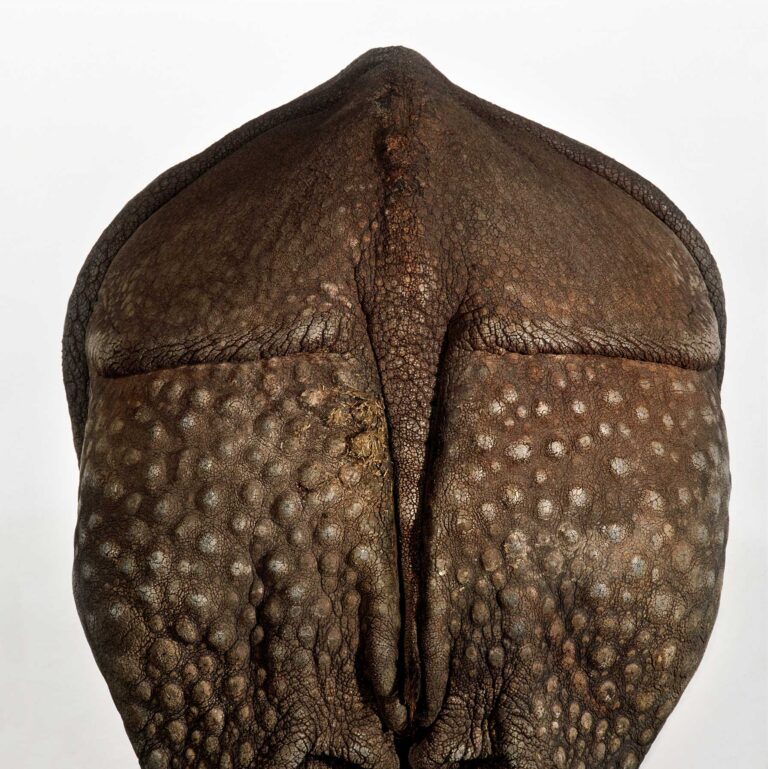In 1987, James began an unprecedented effort to develop studio portraits of endangered and threatened wildlife species. Conventional wildlife photography portrays animals in ostensibly safe and Edenic landscapes. In fact, destruction of natural habitat threatens the survival of many species, which are alienated from the wilds they once inhabited.
Knowing this, James decided to show wildlife in the alien environments of portable photo studios—with fabric backgrounds and artificial lighting—that he constructed around his subjects. Studio styling is used in our culture to attach value to people and products, so by appropriating these tropes, he asserted that ancient biological forms, the products of millions of years of evolution, are precious and valuable too. Simultaneously, this visual approach sometimes produced surprising insights into the symbolic meaning certain animals hold in the human psyche.
The images were first published in Survivors: A New Vision of Endangered Wildlife (1990) and as a National Geographic cover story in April 1990. James’ creative breakthrough inspired legions of imagemakers for decades afterward.
Many of the species that Balog photographed were classified as endangered or otherwise in need of legal protection. Some, like the Florida panther, were nearly extinct; others, like the Wyoming toad, existed only in captivity. Extensive efforts by governments, NGOs, and private individuals have helped some of these populations to stabilize or even expand. But the abundance and freedom many of these species formerly enjoyed is unlikely to return.
The DNA of humans and chimpanzees is 98.8% identical, making chimpanzees more closely related to humans than they are to any of the other great apes, including gorillas and orangutans. Two of the images presented here, from Balog’s “Anima” series, suggest that humanity has a closer connection to the animal kingdom than we humans generally like to believe. One picture poses supermodel and actress Isabella Rossellini with a chimpanzee named Sally. Another shows Sally back-to-back with an elderly man, and, through the strange alchemy that can often infuse the most provocative photos, evokes an ancient connection to our primate ancestors.
